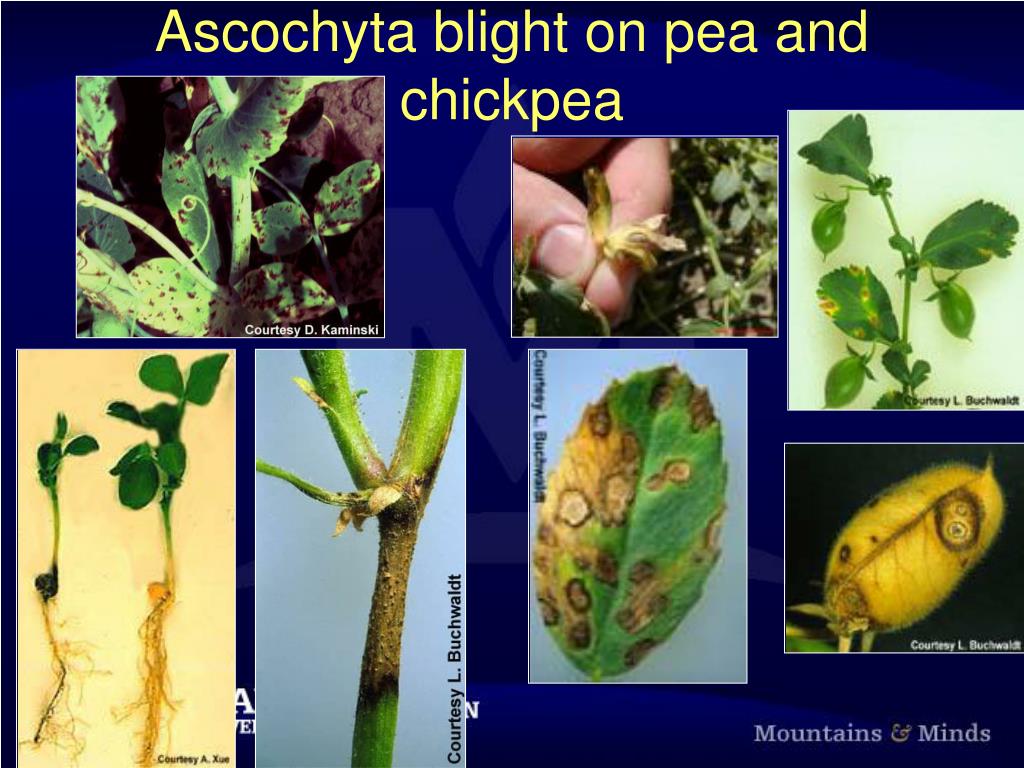

To successfully grow varieties where the ascochyta disease rating is less than moderately resistant, foliar fungicides need to be applied throughout the growing season to avoid serious yield losses. Multiple cycles of infection can occur during the growing season. Symptoms become visible in 4–5 days and pycnidia develop in 7–10 days. During wet weather, the disease can spread further than in dry conditions because spores of the fungus are carried onto neighbouring plants by wind and rain splash.Īscochyta can develop over a wide range of temperatures (5–30☌) but develops fastest when temperatures are between 15 and 25☌ and relative humidity is high. Moisture is essential for infection to occur. Infection can occur at any stage of plant growth, provided conditions are favourable. Spores of the fungus produced on crop residues are carried into new crops by wind. In this stage the fungus survives mainly on infected seed and on crop residues. This fungal disease has an asexual and sexual stage the asexual stage is most common in Australia. When infected seeds are sown, the emerging seedlings will develop dark brown lesions at the base of the stem.

Severe pod infection usually results in reduced seed set and infected seed. The fungus can penetrate the pod and infect the seed. This creates large blighted patches within crops (Figure 2).Īs the disease progresses elongated lesions can often form on the stem and lead to stem girdling and the stem may die and break off. The disease spreads during cool, wet weather from infected plants to surrounding plants by rain splash of spores. In severe cases of infection the entire plant dries up suddenly and small patches of brown, dead plants appear throughout the paddock. Small black spots (pycnidia), less than 1mm in diameter, can be seen in the affected areas (Figure 1). These spots rapidly enlarge under cool and wet conditions, joining with other spots on the leaves and blighting the leaves and buds. This disease is usually first noticed in late winter when small patches of blighted plants appear throughout the paddock. Variety selection, along with an understanding of the associated disease management package for the variety being grown, is critical for success. Temperate pulse viruses: subterranean clover stunt virusĪscochyta blight of chickpea is caused by the fungal pathogen Ascochyta rabiei (formerly known as Phoma rabiei). Temperate pulse viruses: pea seed-borne mosaic virus Temperate pulse viruses: bean yellow mosaic virus Temperate pulse viruses: bean leafroll virus Yield loss is rarely reported, but is possible under conditions such as prolonged cloudy weather with cooler temperatures and rainfall.Temperate pulse viruses: cucumber mosaic virus However, Ascochyta Blight typically occurs early in the season and small black fruiting structures are observed in the lesions.Īscochyta Blight has been reported in most major cotton producing regions. Small, black fruiting structures are likely to be embedded in symptomatic tissue.ĭiagnostics Note: Margins of necrotic regions on leaves and cotyledons will have dark borders. Elongated can-kers on the stem are reddish-purple to black or ash gray in color. Lesions on the cotyledons and leaves approach 2 mm (<0.1 in) in diameter, are white to light brown and circular in shape. Note dark border and also small, embedded fruiting struc-tures in the spots.Ĭaused by: Ascochyta gossypii (Phoma exigua)įoliar Symptoms: Ascochyta Blight forms lesions on cotyledons, leaves, stems, and bolls. Symptoms of Asochyta Blight on cotton leaf. Diseases affecting lower stems and roots.Bacterial Blight (Angular Leaf Spot, Black Arm).Pre-emergence Herbicides and Fluopyram Fungicide.Fall Armyworm, Beet Armyworm, and Yellowstriped Armyworm.Blister Beetle, Japanese Beetle, and Mexican Bean Beetle.


 0 kommentar(er)
0 kommentar(er)
